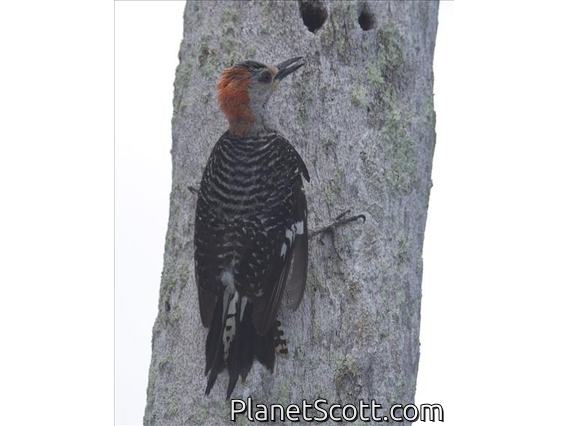Red-bellied Woodpecker (Melanerpes carolinus)

Red-bellied Woodpecker (Melanerpes carolinus)
×


Red-bellied Woodpecker (Melanerpes carolinus)
About Red-bellied Woodpecker (Melanerpes carolinus)
- Kingdom: Animals
- Phylum: Chordates
- Class: Birds
- Order: Woodpeckers, Barbets, Toucans, and Puffbirds
- Family: Piculets and Woodpeckers
The red-bellied woodpecker is a medium-sized woodpecker of the family Picidae. It breeds mainly in the eastern United States, ranging as far south as Florida and as far north as Canada. Though it has a vivid orange-red crown and nape it is not to be confused with the red-headed woodpecker, a separate species of woodpecker in the same genus with an entirely red head and neck that sports a solid black back and white belly. The red-bellied earns its name from the pale reddish tint on its lower underside.
Source: Wikipedia
Visits
-
-
-
2009-05-08
Burnidge Forest Preserve, United States of America -
2010-11-20
Elgin - Bluff Spring Fen, United States of America -
2011-07-10
Santa Fe River, United States of America -
2011-07-11
Ocala National Forest, United States of America -
2011-07-12
Everglades - Shark Alley, United States of America -
2013-03-07
Spring Valley Nature Sanctuary, United States of America -
2013-04-17
Matagorda County Birding Nature Center, United States of America -
-
-
-
-
-
-
-
-
-
-
-
-
-
-
-
-
-
-



